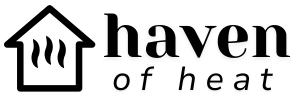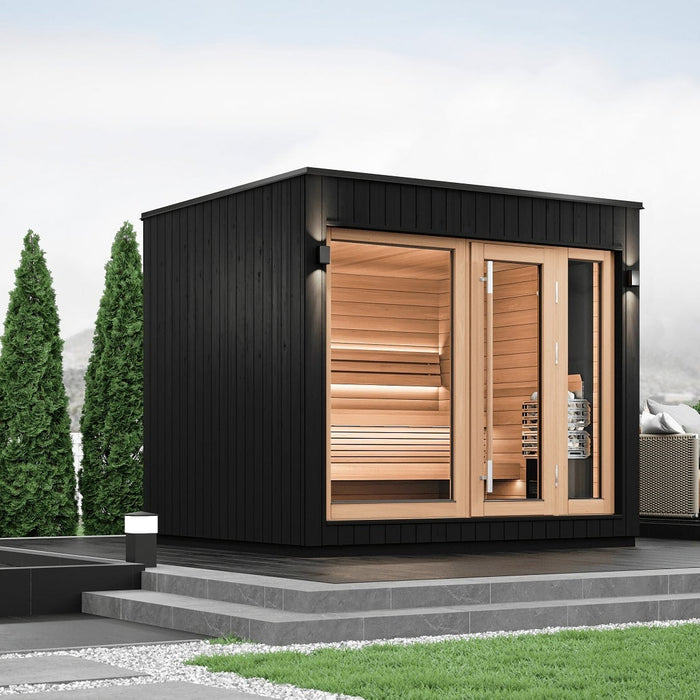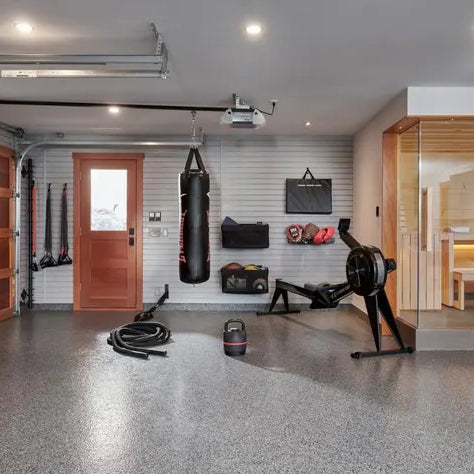Ever wondered how to get that perfect sauna experience? It's not just about the heat – proper ventilation plays a crucial role. Let’s dive into expert advice from Finnish sauna specialists on how to ventilate your sauna for the ultimate relaxation and health benefits.
The Importance of Proper Sauna Ventilation
Proper ventilation in a sauna isn't just a minor detail; it's a fundamental aspect of sauna construction and use. Good ventilation ensures:
-
Optimal Air Quality: Fresh air circulation prevents the buildup of carbon dioxide and maintains oxygen levels.
-
Comfortable Heat Distribution: Even heat distribution throughout the sauna makes for a more pleasant experience.
-
Longevity of Sauna Components: Proper airflow helps prevent mold and mildew, protecting your investment.
Understanding Sauna Ventilation Basics
A traditional Finnish sauna typically operates with a specific ventilation setup. Here’s a breakdown:
-
Air Intake Vent: Usually located near the floor close to the heater. This allows cool, fresh air to enter the sauna.
-
Exhaust Vent: Placed diagonally across from the intake, typically near the ceiling or on the opposite wall. This vent lets hot air escape, ensuring a continuous flow.
Step-by-Step Guide to Ventilating Your Sauna
1. Choose the Right Vents
Selecting the right vents is essential. I recommend checking out the selection at Haven Of Heat. They offer a variety of high-quality vents perfect for any sauna setup.
2. Placement is Key
-
Intake Vent: Install the intake vent close to the sauna heater at floor level. This vent should allow cool air to enter, which will then heat up as it circulates around the heater.
-
Exhaust Vent: Position the exhaust vent on the opposite wall, near the ceiling or upper part of the wall. This setup ensures that the hot air, which rises naturally, will be expelled efficiently.
3. Consider Additional Vents
For larger saunas or those used frequently, additional vents might be necessary. This includes:
-
Wall Vents: Can be placed midway up the wall to aid in circulating air.
-
Floor Vents: Extra floor vents can enhance airflow but should be used cautiously to prevent excessive heat loss.
Tips for Maintaining Sauna Ventilation
-
Regular Cleaning: Ensure that vents are clean and free of obstructions. Dust and debris can block airflow, reducing ventilation effectiveness.
-
Adjustable Vents: Use adjustable vents to control the amount of airflow, tailoring the sauna environment to your preferences.
-
Monitor Humidity: Proper ventilation also helps manage humidity levels. Consider a hygrometer to monitor and adjust as needed.
Benefits of Proper Sauna Ventilation
-
Enhanced Breathing Comfort: Fresh air circulation makes breathing easier and more comfortable, especially during longer sessions.
-
Balanced Heat Levels: Consistent ventilation prevents hot spots and ensures even heat distribution.
-
Health and Safety: Reduces the risk of carbon dioxide buildup, promoting a safer sauna experience.
Common Ventilation Mistakes to Avoid
-
Insufficient Vent Size: Ensure vents are appropriately sized for your sauna. Too small, and they won't be effective; too large, and you'll lose too much heat.
-
Incorrect Placement: Misplaced vents can lead to poor air circulation and uneven heating.
-
Neglecting Maintenance: Regularly check and clean your vents to maintain optimal performance.
Conclusion
Proper ventilation is crucial for a healthy, enjoyable sauna experience. By following these expert tips, you can ensure your sauna is well-ventilated, comfortable, and safe. Don’t forget to check out the high-quality vents available at Haven Of Heat to enhance your setup.
Happy sauna bathing!
FAQs
Q: How often should I clean my sauna vents? A: Regular maintenance is key. Check and clean your vents at least once a month to ensure optimal airflow.
Q: Can I add more vents to my sauna? A: Yes, especially if you have a larger sauna. Just ensure they're correctly placed to avoid disrupting the heat flow.
Q: What are the signs of poor sauna ventilation? A: Symptoms include stuffy air, uneven heat distribution, and lingering moisture or mold.





Leave a comment